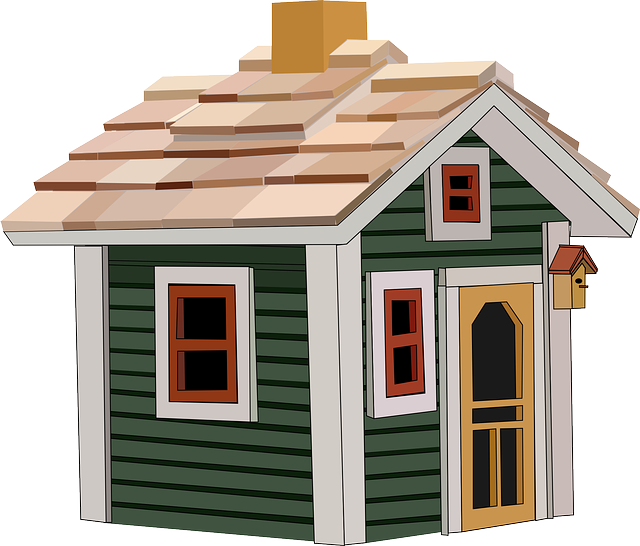To create a zero-waste home, start by evaluating your current habits, identifying areas of waste like single-use items or overbuying, and setting achievable goals for reduction. Incorporate energy-efficient home projects such as LED lighting upgrades and smart thermostats to minimize power usage and waste. Assess daily routines, set realistic goals (e.g., meal planning, composting, eliminating plastics), and prioritize energy-efficient upgrades like LED bulbs and smart thermostats to reduce utility costs and carbon footprint.
Transform your home into a beacon of sustainability with our guide to creating a zero-waste haven. Learn how to navigate and overcome wasteful areas, setting realistic goals that cater to your unique needs. Discover practical upgrades like energy-saving appliances, insulation for better temperature control, and LED lighting.
Adopting sustainable practices, from composting to digital documentation, reduces your environmental footprint. Our section on the low-waste kitchen offers meal planning tips and creative solutions for a zero-waste lifestyle. Embrace an eco-friendly home with our expert advice on energy-efficient home projects.
Identify Wasteful Areas & Set Goals
The journey to creating a zero-waste home begins with a thorough examination of your current habits and identifying areas where waste is generated. Start by assessing your daily routines, from grocery shopping to household cleaning. Look for habits that contribute to single-use items or excessive consumption. For example, do you frequently use disposable bags, single-serve coffee pods, or overbuy non-perishable goods? Taking stock of these habits will help you pinpoint specific areas to focus on.
Once identified, set clear and achievable goals to reduce waste in those sectors. Aim for incremental changes like switching from plastic bags to reusable ones or adopting a zero-waste grocery shopping approach. Incorporate energy-efficient home projects such as LED lighting upgrades or smart thermostats to minimize energy consumption and waste associated with power usage. Setting measurable goals will keep you motivated and provide a roadmap to achieve a more sustainable lifestyle.
– Assessing current home habits and waste generation
Many people are surprised to learn just how much waste their homes generate. The first step in creating a zero-waste home is assessing your current habits and understanding where waste is coming from. Take stock of your daily routines, from grocery shopping to laundry and cleaning. Are there areas where you can reduce, reuse, or recycle? For instance, energy-efficient home projects like switching to LED lighting or installing low-flow faucets not only cut down on water usage but also contribute to a greener environment.
By keeping track of your waste generation, you’ll identify specific practices that need improvement and gain insights into the most effective areas for change. This process will empower you to make informed decisions about which energy-efficient home projects are worth investing in, helping to transform your space into a more sustainable and eco-friendly haven.
– Setting realistic zero-waste goals for your home
Setting realistic zero-waste goals is a crucial step in transforming your home into an eco-friendly haven. Start by evaluating your current habits and identifying areas where waste accumulation is significant. Whether it’s food scraps, single-use items, or excessive packaging, understanding these patterns will help you set achievable targets. For instance, aim to reduce food waste by 20% through meal planning and composting; replace single-use plastics with reusable alternatives; or implement a recycling system for paper, glass, and metal.
Consider your energy consumption as well. Incorporate energy-efficient home projects like LED lighting, smart thermostats, and energy-star appliances into your upgrades. These changes not only contribute to waste reduction but also result in long-term cost savings. Remember, setting realistic goals is key; focus on making gradual changes that fit your lifestyle for sustainable, long-lasting results.
– Prioritizing areas for energy-efficient home projects
When aiming to create a zero-waste home, prioritizing energy-efficient home projects is a strategic step that offers both environmental and financial benefits. Start by assessing your home’s primary areas for energy consumption: heating and cooling systems, lighting, and appliances. These are often the most significant contributors to your energy bills and carbon footprint. For instance, upgrading to energy-efficient HVAC (heating, ventilation, and air conditioning) systems can significantly reduce energy usage and lower utility costs.
Focusing on simple yet impactful changes like switching to LED bulbs and installing smart thermostats is a practical way to begin. These upgrades are relatively low-cost and easily accessible, making them excellent entry points for your zero-waste journey. Additionally, consider the long-term savings and environmental impact of investing in energy-efficient home projects, which can include better insulation, double-glazed windows, or solar panel installations, further reducing your household’s energy consumption.
By identifying wasteful areas and setting achievable goals, anyone can transform their home into a zero-waste haven. Through practical upgrades focused on energy-efficient home projects, you can significantly reduce your environmental impact. Remember, small changes add up to big differences, and each step towards sustainability is a win for both your home and the planet. Embrace this journey towards a greener lifestyle and inspire others to do the same.
